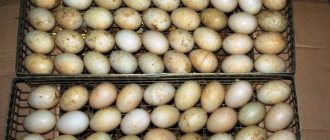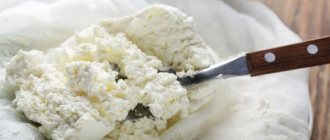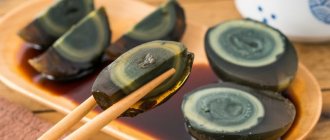You bought homemade milk and put it in the refrigerator, but after some time it does not sour, but becomes bitter. This outcome is alarming and makes you doubt the quality of the product, but do not be alarmed. Bitterness in milk does not appear out of nowhere and is not a sign of counterfeit; this phenomenon can be called normal. Our explanations will help you understand why this happens.
Why doesn't milk turn sour?
The normal microflora of milk includes beneficial microorganisms that feed on sugar. They convert it into acid, which leads to souring.
The process of lactic acid fermentation is the result of the activity of lactic and propionic acid bacteria, kefir grains, and milk yeast. The addition of certain bacteria helps produce tasty fermented milk products.
The shelf life of homemade milk is short. After about two hours of exposure to air, it begins to sour with the gradual formation of a clot with a sour cream aroma - curdled milk. By adding the appropriate starter to it, you can prepare cottage cheese, fermented baked milk, and kefir.
Boiling homemade milk increases its shelf life to several days, and storing it in the refrigerator – up to two weeks.
Milk does not turn sour if:
- the animal suffers from ketosis - a metabolic disease (disorder of carbohydrate, protein, fat metabolism), leading to the accumulation of ketone substances (acetone, acetoacetic, beta-hydroxybutyric acid) in the cow's body. The pathology may not manifest itself in any way, but the milk practically does not sour, and the cream has a distinctly bitter taste;
- the animal’s diet is disrupted: a large amount of protein food, mint, non-compliance with the proportions of sugar and protein.
- soda, antibiotics, ammonia, peroxide, preservatives, and other substances have been added to the raw materials or animal feed;
- the drink is diluted with water;
- the product has excessive fat content. Due to the thick layer of cream, oxygen does not penetrate into the liquid, which prevents fermentation;
- the product was obtained before calving;
- The drink is stored in the refrigerator, not in a warm place. This slows down the proliferation of lactic acid bacteria and souring;
- old, inactive starter was used;
- The dairy product is stored in a hermetically sealed container.
The safety of store-bought milk, unlike homemade milk, depends on the method of heat treatment of the raw materials, but in all cases it lasts longer than homemade milk. Best before date:
- sterilized - up to six months, which is due to the almost complete destruction of microflora;
- pasteurized - in the refrigerator from five days to two weeks, depending on the production method.
The production of UHT milk involves short-term exposure of raw materials to high temperatures followed by cooling. In the process, many substances useful to the body are preserved, but the microflora is destroyed and bacterial spores necessary for souring are destroyed. The finished product is bottled in sealed packaging under sterile conditions, which increases its shelf life to six months at room temperature. If automated bottling occurs and the integrity of the packaging is compromised, the shelf life is reduced to two weeks.
Some manufacturers preserve the freshness of milk by adding stabilizing additives prohibited by state standards to low-quality raw materials. The addition of phosphate products for thermal stability allows the dairy product to withstand high-temperature heating and not sour for more than five days.
Masks and creams based on sour cream
If you mix sour cream with the juice of ½ lemon, you will get an excellent nourishing mask for normal skin. By the way, the same mixture with the addition of a teaspoon of liquid honey will serve as an excellent softening and whitening cream for the skin of the hands. And for dry skin, a mask made from sour cream mixed with cucumber, grated on a medium grater and slightly squeezed out of excess liquid is very suitable.
You can also rub the cream on your skin without adding any other ingredients. Using cream you can strengthen the nail plate, eliminate splitting and even get rid of fungus.
The decoration of any table will be Guryev pancakes. To prepare them, thoroughly mix 2 cups of wheat flour with 3 egg yolks and about 100 grams of melted butter. Dilute the resulting mixture with sour cream (about 200 milliliters). Add 3 beaten egg whites, stir thoroughly again. Pour in a tablespoon of vegetable oil and bake pancakes in a very hot cast iron frying pan.
Is cream a snow-white cloud or just fat?
There is one dairy product, the mention of which almost causes horror in the eyes of those losing weight - cream. For some reason, a picture immediately pops up: a snow-white sweet cloud, generously crushed with chocolate, lying on a vase of strawberries. Terribly tasty, but also terribly high in calories! So what now – give up cream altogether? Of course not! Despite the high calorie content of cream, it retains vitamins and other nutrients almost more than other dairy products, so their moderate consumption is welcomed by modern medicine and dietetics in particular.
I think no one will name the exact date of the “birth” of cream; perhaps it happened almost immediately after man tamed and learned to milk buffaloes, cows or goats. But it is known for certain that the first dessert made from whipped cream was presented to Baroness Oberurich by the head waiter F. Vatel, who served at the Chontiers castle. And this significant event happened back in the 17th century.
Our ancestors obtained this valuable and very tasty product in the simplest way. They simply skimmed the thick top layer from settled whole milk. A modern method of separating cream is separation. As a result of extracting the fatty fraction, natural fresh sterilized and pasteurized cream of different degrees of fat content is obtained. But there are still more benefits from “grandfather’s” cream! It is much more effective for our intestines when milk fat enters the body without losing the natural state of the protein-fat emulsion.
The human digestive system is poorly adapted to utilize “liquid” vegetable or animal oils. In the composition of seeds, nuts and fruits, fats are found in the form of the finest emulsion, microscopic balls with protein shells, the same in milk! Entering the intestines in the form of such a protein-fat emulsion, fats are quickly digested by lipases already in the upper part of the small intestine. “Concentrated” fats released from this natural emulsion are very poorly digested. Their breakdown occurs slowly, over five to six hours, throughout the entire length of the small intestine. About 5% of these fats do not have time to be absorbed and pass into the large intestine, stimulating fermentation processes here.
Useful properties of cream
Cream has all the beneficial properties of milk, with the only difference being that the concentration of carbohydrates, proteins, fats, vitamins and minerals is significantly increased. Moreover, all these substances are absorbed by the human body more easily than from any other type of food, so cream is recommended for everyone who expends a lot of energy during the day.
The fresh product is included in the therapeutic diet for gastritis, gastric and duodenal ulcers. Due to the high concentration of l-tryptophan, which inhibits the excitation of the nervous system, it is recommended to be included in the diet of those who suffer from insomnia, nervous disorders, and depression.
Lecithin present in cream helps eliminate bad cholesterol. For some types of poisoning, cream helps fight intoxication.
In combination with carrot juice, cream relieves swelling and helps cope with kidney diseases. And if you add honey to this mixture, this will have a beneficial effect on sexual function. Elderly people and those prone to obesity are recommended to replace butter with cream, consuming it in limited quantities.
Why does milk not sour, but become bitter?
If the milk has not turned sour, but has acquired a bitter taste, the following factors need to be analyzed.
Presence of antibiotics
The addition of drugs from the antibiotic group is prohibited by law. At the same time, they enter the animal’s body after vaccinations or treatment, as well as through feed, where antibiotics are added to prevent the development of mold fungi.
For unscrupulous manufacturers, the addition of antibiotics allows them to destroy pathogenic microflora in raw materials, but along with it, beneficial bacteria disappear. As a result, the shelf life increases, but the product develops a rancid taste and does not turn into sour milk.
Solution
If there are no congenital diseases, then all problems with the bitter taste of milk can be solved. It is imperative to determine the exact cause of the bitterness, and only then take action. Congenital pathologies include bending of the gallbladder and narrow lumen of the bile ducts. As a result of such anomalies, bile stagnates in the body and milk becomes bitter. With the help of medications, you can alleviate the animal’s condition, but it cannot be cured.
For example, to treat worms, a cow is given injections based on closantel. They are injected once at the rate of 10 ml per 200 kg of animal weight. Sometimes you have to repeat the injections after 10 days.
Powders are used in the treatment of helminths. They are added to the animal's favorite food or water. The drug is usually taken before feeding. The medication is given to the cow twice with an interval of 2 weeks.
Important! The most effective medications are Brovalzen, Albendazole, Brovadazole. The bitter taste in milk may not disappear before 10 days, even with successful treatment.
In case of mastitis, the cow is transferred to a separate room and is given manual milking up to 5 times a day. She needs improved feeding with increased hay content. The veterinarian will prescribe special medications to increase immunity, reduce inflammation, and fight bacteria. Mamifort and Masti Veiksim are considered effective medications.
You can use traditional medicine recipes:
- ointment made from dried calendula flowers with lard;
- applications of cabbage leaves with grated carrots, honey and beets;
- cooling or warming water compresses.
For leptospirosis, specialized medications are prescribed, for example, Amoxmcilin, Floridox. To prevent infection with this disease, cows should not be grazed in swampy areas, lowlands, near rivers and lakes. Special places must be equipped for watering places. Animals should be transferred to summer housing gradually. For example, in the first week, walks should last no more than 3 hours.
In winter, the barn should be well ventilated. Animals should not be kept indoors throughout the winter. Near the barn it is necessary to equip a walking area with a haystack.
Why does milk become bitter when it sours?
The reasons why milk turns sour when it sours are identical to the factors listed above, which is why the drink does not sour, but becomes bitter. In addition, it is necessary to comply with the conditions and periods of storage of the product, which will minimize the development of pathogenic microorganisms that can not only spoil the taste, but also cause poisoning. To avoid unpleasant taste and odor during lactic fermentation, you must not:
- store milk at + 30–40ºС or in dirty, rusty containers;
- mix morning and evening milking products;
- leave the product exposed to direct sunlight for a long time.
It is possible that anaerobic clostridia - butyric acid bacteria, which are found in silage, trampled wet manure, and sludge - may get into the milk. Bacteria do not interfere with the souring process, but lead to the formation of bitter-sweet curdled milk. Pasteurization does not destroy microorganisms; only boiling leads to their death.
You can eat bitter cream - how long it can be stored, what to do, why it’s dangerous
Author pravilnayahozyaika Reading time 14 min. Published 08/11/2020
Hello everyone, Olga is with you as always, perhaps you will need information on storing food and various things and I will tell you about the cream gone bad (What to cook this for, mmm?). Maybe some details may differ, as was the case with you. Attention, always read the instructions of the things you buy for cleaning the house or the chemicals that help to store them. I answer the simplest questions. Write your questions/wishes and secrets in the comments, and together we will improve and supplement the quality of the material provided.
Success stories —> Recipes —> Nutrition and training diaries—> Best diets—> Communication—> Calorie tables—> Calculators—> Articles—>
The information is provided for informational purposes only. Do not self-medicate. Always consult your doctor.
Success stories —> Recipes —> Nutrition and training diaries—> Best diets—> Communication—> Calorie tables—> Calculators—> Articles—>
Why does store-bought milk taste bitter?
If store-bought milk in a package is bitter, it means that it was produced in violation of technology, with the addition of antibiotics, preservatives, or from low-quality raw materials. Bitter milk, used as a raw material, occurs in case of animal diseases:
- liver pathologies;
- mastitis, mainly of a chronic nature;
- parasitic diseases;
- colds, inflammation of the appendages;
- leptospirosis. Bitterness in milk may be the only sign of illness.
The bitterness of milk is observed during the period of estrus, a couple of months before giving birth, after the animal has consumed veterinary drugs, as well as some plants: garlic, wormwood, yarrow, potatoes.
Mineral metabolism disorder
If checking livestock for helminthiasis did not yield anything, and the milk still remains bitter, then you need to pay attention to the presence of the following features in the behavior of animals:
- the appearance of a perverted appetite. Cows may lick walls, staff, chew soil or rotten wood;
- reduction in milk yield and fat content in dairy products. This indicator is not mandatory, but may be present.
Most likely, the issue is a lack of cobalt. Animals need very little of this microelement, but in most pastures it is not available even in this quantity. Deficiency manifests itself as bitterness in dairy products during the winter months. To solve the problem, use special tablets containing cobalt chloride.
Why does boiled milk become bitter?
Boiling milk kills both pathogenic microorganisms and lactic acid bacteria, which increases the shelf life of the product, but prevents souring, which occurs over a long period of time and gradually.
When sour cream or kefir is added to boiled milk, it will quickly become sour. Long shelf life when opened allows the penetration of various microorganisms, and the product becomes bitter.
It is impossible to independently determine why milk is bitter. This requires laboratory tests to determine the composition of the product. In any case, drinking bitter milk and using it for cooking is prohibited. The components present in it are hazardous to health.
What to do to prevent milk from becoming bitter:
- Do not leave the product in the refrigerator for a long time. Or set the temperature to 7–8ºС.
- Shake the product from time to time to prevent sedimentation and uniform proliferation of bacteria throughout the liquid.
- After purchasing pasteurized milk, add sour cream or yogurt (one spoon). Restarting will increase the growth of normal microflora.
The choice of manufacturer is important. Testing different brands of milk allows us to identify the highest quality product.
What delicious dishes can be prepared from sour cream?
Spoiled cream can make very good pancakes. To do this, beat 2 chicken eggs with a small amount of granulated sugar, add salt to taste, a pinch of baking soda and sour cream. Stir thoroughly and add sifted flour. The amount of flour depends on the amount of cream added. Sprinkle so much so that after mixing you end up with a fairly thick dough. Fry the pancakes on both sides in heated vegetable oil until browned.
If you add an apple cut into thin strips or grated on a medium grater to the dough, the pancakes will be especially tasty.
The decoration of any table will be Guryev pancakes. To prepare them, thoroughly mix 2 cups of wheat flour with 3 egg yolks and about 100 grams of melted butter. Dilute the resulting mixture with sour cream (about 200 milliliters). Add 3 beaten egg whites, stir thoroughly again. Pour in a tablespoon of vegetable oil and bake pancakes in a very hot cast iron frying pan.
Presence of mastitis
This disease gives not only bitterness, but also other negative taste qualities to milk. Foreign flakes and clots can be observed in the products, there is no fat content, etc. Each type of mastitis will have its own manifestations.
Note to the farmer. The most important thing is to determine in time what form of mastitis the animals are suffering from and what pathogenic bacteria caused it. Treatment begins only after an accurate diagnosis, otherwise it can only cause harm.
Mastitis in a cow
What other reasons can cause bitterness?
The main factors affecting the quality of dairy products were listed above, but there may be other reasons, more rare. These include:
- presence of bitter herbs in hay or green mass. Wild rowan, yarrow, and wormwood can cause bitterness, but a very large quantity is needed, and animals will not eat bitter grass very often. In this case, the owner is recommended to reconsider the diet of the cows;
- failure to comply with hygiene requirements during maintenance. Dust and foreign microorganisms found in the barn can get into the dairy products. Therefore, it is necessary to pay maximum attention to udder hygiene and cleanliness in the premises where animals are kept;
- the presence of congenital anomalies. This includes problems with the gallbladder or ducts that cannot be treated, and therefore dairy products will constantly taste bitter;
- a bile infection or liver problem can occur without any significant symptoms and develop into a chronic form. A striking example is leptospirosis, which is determined only in laboratory conditions. A veterinarian must prescribe treatment.
Hygiene in housing and milking
The cow gives milk every day, which is consumed by humans. Changes in the main properties of milk are affected by livestock maintenance.
There are factors that create the taste of milk:
- regular change of bedding;
- cleaning cow premises;
- carrying out disinfection;
- washing hands and udders before milking;
- clean dishes and clothes.
Dust from the ceiling or particles of manure from an animal's tail can easily end up in the milk bucket. Perhaps they will not immediately lead to damage to the product. But the taste of bitterness and unpleasant odors will leave no doubt as to whether such a drink can be drunk. The problem often exists during the winter when the cow spends a lot of time in the stall.
A cow's milk is often bitter due to the mixing of the first streams with the main volume. The enzyme and microbes found there in excess quickly break down fats. As a result, a corresponding bitter taste is formed. Therefore, it is better to milk the first drops into a separate bowl.
More on the topic: How to choose a milking machine for cows?
Pregnant cows
If the milk starts to taste bitter, it's probably time to start. Before this, you need to reduce the frequency of milk production, gradually reducing it to zero. This will help the animal gather strength for labor and give birth to a healthy calf, and then feed it. For highly productive cows, the start should begin one and a half to two months before the birth of the offspring. During the dry period, cattle in need of rest receive the necessary opportunities to preserve and use nutritional components for the developing fetus. Often, highly productive animals force the owner to carry out a complex set of work to stop milking. But cows with low productivity often go into production on their own.
Bitter milk is evidence of deep pregnancy. This taste shows that a complex work of internal restructuring is taking place in the animal’s body, due to the approaching birth. In addition, cow's milk is necessary for feeding the calf, and preparation for this process also provokes a change in the taste of the product.











